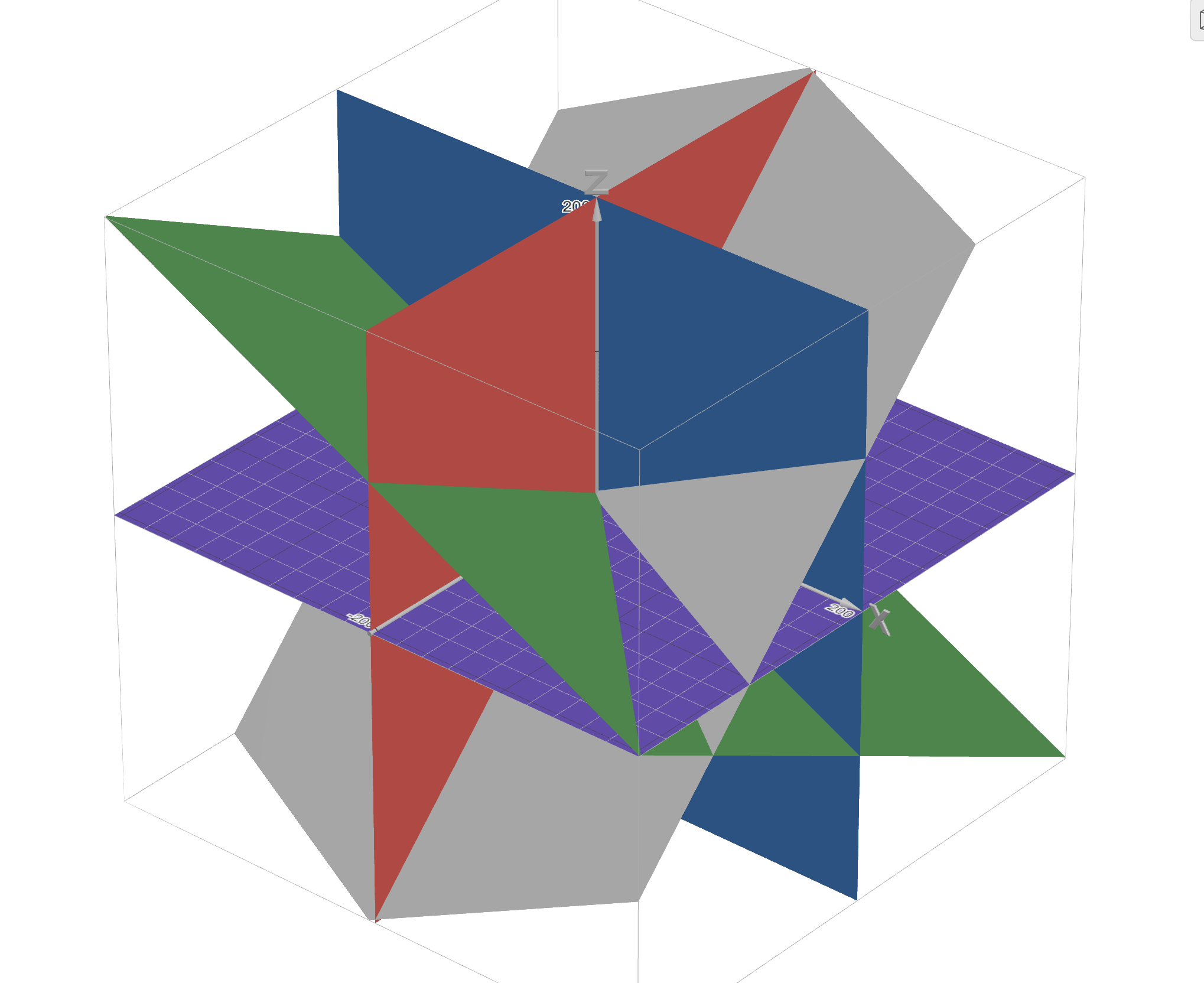Cake Cutting

Donald wants to cut his birthday cake with 5 (three-dimensional)
slices. What is the maximum number of pieces of cake that he can produce
with these 5 slices?
The cake is cylindrical. Each slice is a three-dimensional plane, and
the shape of the cake remains intact (although cut) after the slices are
made. Also, the pieces do not move when cutting a cake.
Source: Concrete Mathematics written by Donald Knuth!
The answer is 26. You can find an example of 5 cuts that divide the
cake into 26 pieces here: https://www.desmos.com/3d/baf22a25f7.

Next, we will discuss why the cake cannot be cut into more than 26 pieces with 5 cuts. To do this, we first solve the 2D version of the problem. Let \(L(n)\) be the maximum number of parts of a plane divided via \(n\) lines. When we add the \(n\)’th line to the plane, it cuts the previous lines at at most \(n-1\) places, so it adds at most \(n\) new parts to the plane. Therefore
\(L(0)=1\)
\(L(1)=L(0)+1=2\)
\(L(2)=L(1)+2=4\)
\(L(3)=L(2)+3=7\)
\(L(4)=L(3)+4=11\)
Now for the 3D version, we denote the number of the maximum parts of a cake with n cuts by \(P(n)\).
After the \(n\)’th cut, the intersection of the \(n-1\) previous planes with this one forms at most \(n-1\) lines. Thus the previous planes create at most \(L(n-1)\) 2D parts on the new plane. Each of these 2D parts can be the cross-section of one of the 3D pieces. So the \(n\)th cut intersects with at most \(L(n-1)\) 3D pieces of the previous cuts. Therefore \(P(n)=P(n-1)+L(n-1)\). Therefore:
\(P(0)=1\)
\(P(1)=P(0)+L(0)=2\)
\(P(2)=P(1)+L(1)=4\)
\(P(3)=P(2)+L(2)=8\)
\(P(4)=P(3)+L(3)=15\)
\(P(5)=P(4)+L(4)=26\)
This implies that \(P(5)=26\). Therefore, the maximum number of pieces of the cake after 5 cuts is 26.